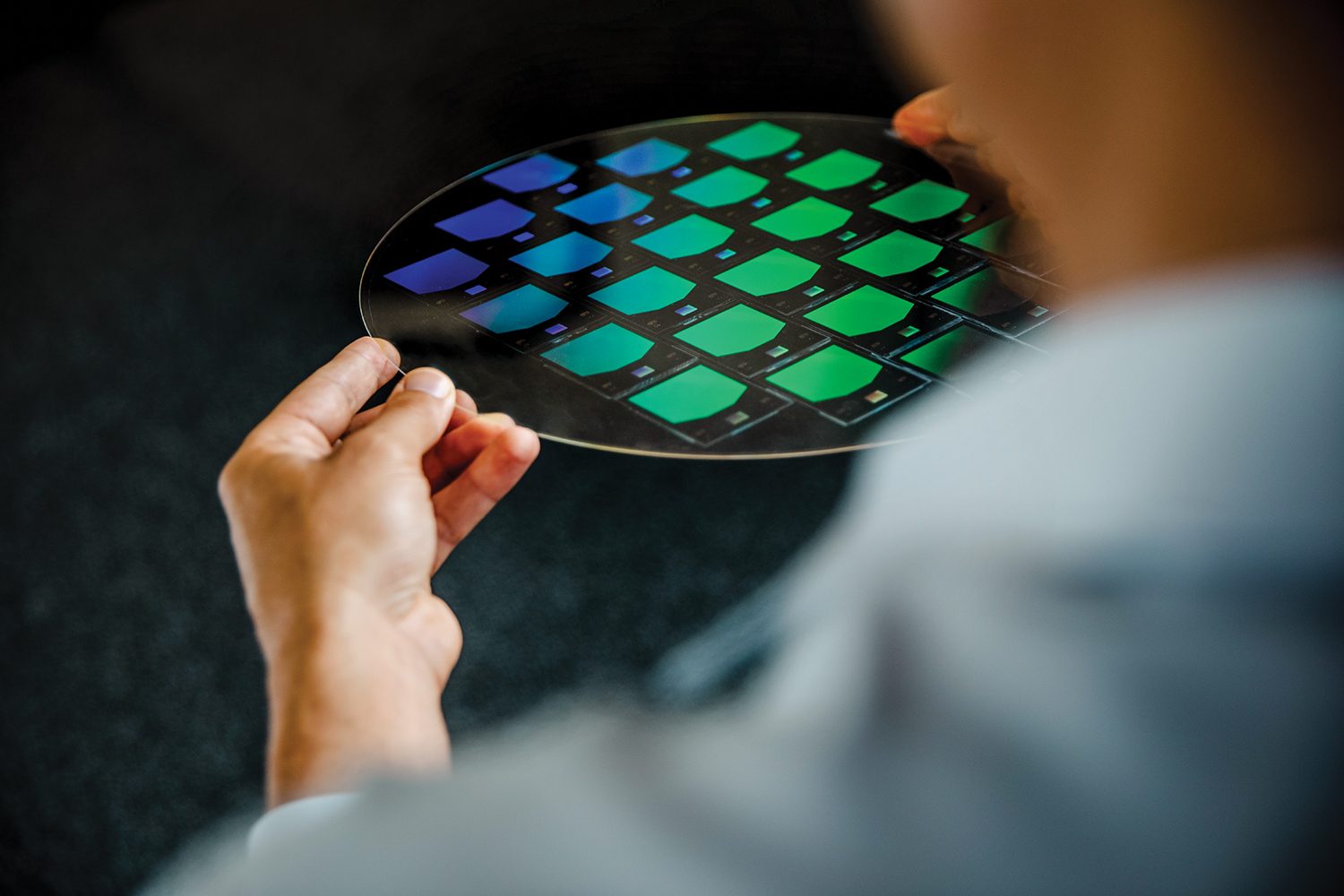industry perspectives

Brian Sjogren
Guest columnist
Brian Sjogren
Guest columnist
Why glass is the key in the future of augmented reality
Before the days of light-as-your-eyeglasses augmented reality (AR) devices, Harvard University produced “The Sword of Damocles” in 1968.1 It was a heavy headset with multiple cables and mechanical arms meant to overlay simple wireframe images onto the user’s view.
Today’s expectations for AR devices are far different—slim frames holding lenses that produce images as a new layer of reality. Obtaining the desired image quality, mechanical robustness, and optical performance within a compact footprint will require the development of novel materials and products. It is thus unsurprising that the market for AR devices is projected to grow to about $90 billion in the next two years.2
What goes into AR systems
Glass wafers with a high refractive index are vital in the optical system. Unlike a computer screen, where the image projects through the glass in one direction, AR devices project the image through the length of the glass. Homogeneity of the refractive index allows for tighter control of the total internal reflection so the user sees the best possible image quality with the designed field of view.
There are three main architectures used for AR systems. Diffractive waveguide architectures are processed using either surface relief gratings structures or reactive ion etch gratings structures built into or on top of the high-index glass. Holographic waveguide architectures use principles similar to Bragg gratings that reflect specific light wavelengths and transmit others. Reflective architectures use waveguides that direct the image to the eye through multiple partial reflectors.
Manufacturing waveguides is a complex process that includes coating, stacking, slicing, polishing, and shaping the glass. At the same time, AR device manufacturers demand strict tolerances across hundreds of layered glass parts with unique geometries. Automation and process refinements must progress for costs to decline.
The price for AR consumer devices remains high, just like the early days of cell phones that cost thousands of dollars. As the market expands and technology advances, manufacturing the components of these devices will become cheaper, and the devices will include more features.
Glass for the future of AR
SCHOTT’s rich history in advanced optics gave the company an understanding of where the AR market could go, as well as the ability to evolve its high-index optical glass products into the next breakthrough for AR devices. SCHOTT created the Strategic Business Field Augmented Reality in 2016 and has worked on high-index glass wafers, SCHOTT RealView® (Fig. 1),3 ever since.
In 2019, SCHOTT partnered with Lumus, a developer of reflective waveguide technology, to enable cost-effective, mass-scale manufacturing of waveguides for near-to-eye AR devices. The companies recently extended the partnership to include new architectures for even better performance and flexibility in the design of AR glass.4
The Lumus devices use a novel Z-lens architecture that is compact and lightweight yet has a high power efficiency and a field of view ranging between 15–70°. As AR applications evolve, both specialized Z-lens-style smart glasses and more expansive, immersive devices will coexist depending on use case needs, but they require very different optical properties. The market is going all-in on both technologies.
SCHOTT’s partnership with Lumus goes beyond supplying glass wafers to produce waveguides. SCHOTT’s vertically integrated production chain leverages more than a century of expertise across coating applications, precision polishing, bonding, contouring, and final assembly to help fabricate the Lumus waveguides.
AR has come a long way from the bulky contraption that was The Sword of Damocles. While technical challenges remain, steady progress in advanced optics and core components pave the way for more affordable and sleek AR devices.
About the author
Brian Sjogren is business development manager for augmented reality at SCHOTT North America (Duryea, Pa.). Contact Sjogren at brian.sjogren@us.schott.com.

Figure 1. SCHOTT’s high-index glass SCHOTT RealView® wafer.
Credit: SCHOTT AG

Figure 1. SCHOTT’s high-index glass SCHOTT RealView® wafer.
Credit: SCHOTT AG